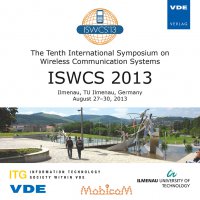Feasibility of DVB-T2 and DVB-NGH Pilot Patterns for Compressed Sensing Based Channel Estimation
Conference: ISWCS 2013 - The Tenth International Symposium on Wireless Communication Systems
08/27/2013 - 08/30/2013 at Ilmenau, Deutschland
Proceedings: ISWCS 2013
Pages: 5Language: englishTyp: PDF
Personal VDE Members are entitled to a 10% discount on this title
Authors:
Gay, Matthias; Lampe, Alexander (Hochschule Mittweida, Technikumplatz 17, 09648 Mittweida, Germany)
Breiling, Marco (Fraunhofer Institute for Integrated Circuits, 91058 Erlangen, Germany)
Abstract:
In mobile systems it is essential to estimate the channel response at the receiver. Since the multipath structure of the radio channel is generally sparse, this has recently proven in OFDM systems to be an application where insights from the theory of Compressed Sensing (CS) can be beneficial. Classical methods apply for example digital MMSE filters, exploiting correlation in time and frequency to estimate the channel in frequency domain, whereas CS methods exploit sparsity in time domain. Many contributions have been made on this topic with the focus on designing transmission systems that support CS-based channel estimation. In this paper we study the applicability of CS-based channel estimation for the next generation digital video broadcasting standards DVBT2 and DVB-NGH, where the pilot patterns were designed for conventional linear estimation methods, rather than for CS. Based on the mutual coherence of the resulting sensing matrices for different configurations, we give statements on the expected reconstruction performance when using CS methods and verify the results by numerical simulations. We focus on the probability of correct support detection and the mean squared error in the noise free case and give an outlook on the estimation error for varying noise level.


